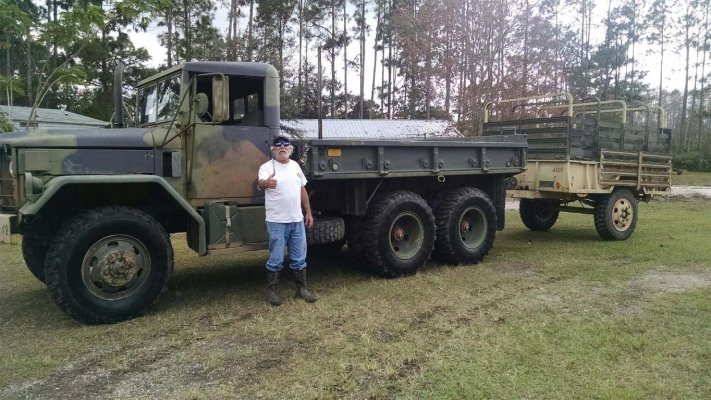Bernie, so the first pic I see is the Donaldson filter. The drain is on the bottom but the pic shows it on top, lol, please turn if over if the pic is correct. Obviously the clear bowl and drain are supposed to be on the bottom for draining off any water you might find. The second and third pic I see with the knob is your hand priming pump. This is used to prime your fuel filter with fuel after you change it (yes that is a lock for the hand prime). The last pic looks like your secondary filter housing. You usually have two, a primary out back (usually around 20-30 micron, and a secondary close to the engine (usually a 2-4 micron) which will do a final filtration before the fuel goes into your system.
Most mfrs now recommend not filling any filters period. The reason is because most folks don't know the difference between the inlet and outlet side of a filter and they don't want dirty oil or fuel in the system. Yes it is hard on the starter cranking until the fuel system primes (not so tough on the oil filter but still harder than it should be) but way better than putting dirty fuel into your very expensive fuel components (injection pump, etc). So if you don't' want to do it correctly I suggest you install dry filters as they recommend.
If you prime a filter you always do it through the small outside holes so the liquid has to go through the filter (and be cleaned) before it enters the system up through the large hole in the center of the filter. This means plugging the large center filter hole and taking your time as you fill the filter with nothing but the new oil or fuel you are putting in your engine (all the hocus pocus of using other liquids is not necessary). Start with your rig reasonable level and you won't lose a lot of prime back to tank when you remove the fuel filter. The important thing is if you fill your filters do it correct. New oil or fuel in a sealed container is only about class 6 oil (around 25 micron) and your system uses a filter that is around 4 to 10 micron. New oil and fuel in a sealed can is considered dirty for all systems, period.
With your system you can install dry fuel filters and then use your hand prime pump to fill them before you start cranking. It will take quite a bit of pumping and you will develop muscles in your thumb but it does work well. These pumps have a tendency to start leaking around the plunger seal so keep that in mind if you start to have long crank to start problems.
For your oil filter you can prime it as suggested above or you can locate your fuel shutoff, sorry I cannot remember where yours is located. The newer engines do this electronically, not allowing the engine to start until oil pressure is maintained. If I recall you will have a ball valve up close to the injection pump in the fuel rail if it has not been removed (they were a pain). If you can't see it then call the local dealer with your HEP & arrangement # and they will tell you what they installed for that year.
Do it correctly or do a dry start. Sorry for the length, hope this helps.





